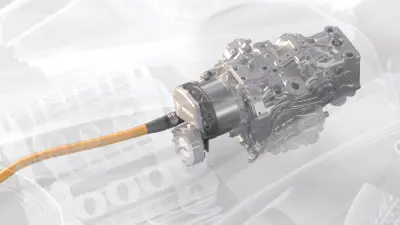Under high stress – over the entire distance: Bosch supplies hybrid system for new Le Mans Daytona hybrid
Drivers and material pushed to the limit: endurance racing is the ultimate test of durability in motorsports. The year 2023 ushers in a new era for one of the most important and prestigious forms of motorsports with the new prototype class – Le Mans Daytona hybrid (LMDh). Bosch Motorsport is lining up to prove its expertise, endurance, and performance as the supplier of the unified hybrid system.

One system for all: manufacturers, race series, challenges
It is a historical development in motorsports, and Bosch is one of the driving forces. For the first time in over 20 years, manufacturers and teams can use the same car to compete for the overall victory in the FIA World Endurance Championship and the IMSA WeatherTech SportsCar Championship – without having to modify the race car. The new class emphasizes fuel savings, sustainability, and cost efficiency by including uniform units such as the rear-wheel hybrid drive system.
As the lead developer and integrator of this system, Bosch Motorsport proves that it can skillfully apply its many years of know-how and expertise in motorsports at the highest level and under the toughest conditions – not only in terms of hardware and software but also in the perfect interaction of all components and partners.
Going the Distance – documentary series on the development

Before race drivers and their cars push themselves to the limit on the racetrack, the engineers at Bosch Motorsport have already completed their own race of endurance. Take a look behind the scenes and meet the team behind developing the hybrid system.
System overview
Within an intense development time frame, Bosch developed all the components, including the intelligent hybrid power management software. This required close collaboration not only with chassis designers and battery and transmission partners but also with both race series and all manufacturers.
Motor generator unit

The high-voltage electric machine, also called a motor generator unit (MGU), delivers up to 200 kW and is connected directly to the transmission. It can be operated as a generator or a motor. As a generator, it converts the race car's kinetic energy into electric energy and feeds it back into the battery to be used again later. As a motor, it uses the electric energy from the battery to power the race car. The torque curve is optimized for the lower ranges, which provides much faster acceleration out of the corners. Regulations set the maximum speed at 20,000 rpm.
Motor control unit (inverter)
The motor control unit (MCU) is a further development of a standard high-voltage inverter designed specifically for motorsports to operate a 3-phase Bosch MGU with up to 200 kW. Its main tasks are to control the torque, speed, and to provide thermal management, derating, hybrid management and fault detection. The applied silicon carbide semiconductor technology optimizes the space and weight and ensures an excellent balance between robustness and efficiency, which is especially important for endurance racing. The extreme power density and high switching frequency enable the electric machine to operate at very high speeds with maximum efficiency and performance.


Electric brake system
The electric brake system (EBS) applies brake-by-wire technology, which intelligently balances the braking torque provided from the electric machine (MGU) with the traditional hydraulic system braking torque. This makes the system lighter and more compact than conventional braking systems. It enables automatic electronic proportioning of the rear brake circuit to help the driver balance the braking between the hydraulic brake torque and electric regeneration torque. When the driver applies the brakes, the MCU control unit changes the magnetic fields in the Motor Generator Unit MGU and the engine function becomes a generator function, with the MGU decelerating the vehicle. The energy generated is fed back into the battery.
Hybrid control unit

The hybrid control unit (HCU) is a key component of the hybrid drive system and plays a decisive role in controlling and regulating the energy flow between the internal-combustion engine and electric motor. It is robust and durable and can react reliably and extremely quickly to changes in handling and the resulting energy requirements – even under high stress. The electronic control unit can optimize powertrain functions in real time in order to achieve the highest possible performance. In addition, the hybrid control unit also monitors and maintains the safety within the hybrid system.
Intelligent software for hybrid power management

Intelligent software for hybrid power management
As robust and powerful as the components are, the system can only come to life if they all speak the same language.
This is where software comes into play. Bosch Motorsport has pooled its comprehensive expertise in software development to design the hybrid performance management software and bring out the best of the system. The intelligent software controls the distribution of torque among the internal-combustion engine, electric machine, and brake-by-wire system on the basis of what the driver demands.












